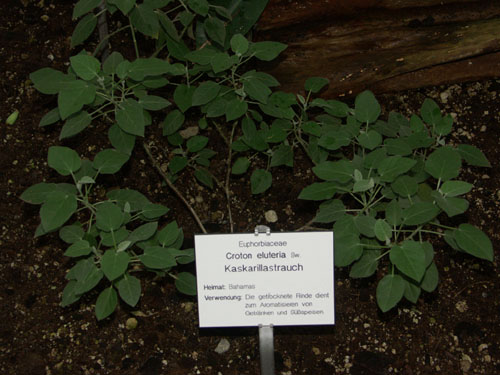[1] Potter's New Cyclopaedia of Botanical Drugs and Preparations R.C. Wren
Revised by Elizabeth M. Williamson and Fred J Evans. First published in Great
Britain in 1988 and reprinted in 1989 and 1994 by the C. W. Daniel Company Limited.
1 Church Path, Saffron Walden Essex. Published 1988 Printed and bound by Biddles,
Guildford ISBN 085207 1973.
Images
1.
ifp.rz.tu-bs.de  Croton
eluteria. C. eleuteria
Cascarilla, Sweet wood bark Family:
Euphorbia
Croton
eluteria. C. eleuteria
Cascarilla, Sweet wood bark Family:
Euphorbia